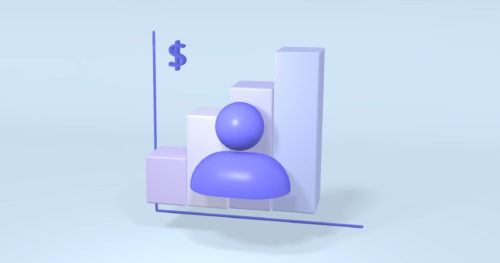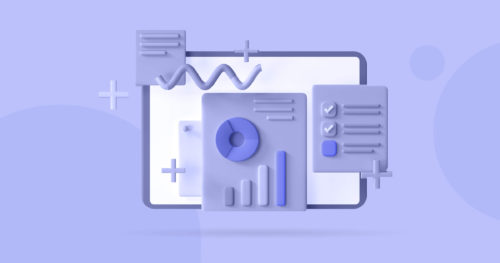There are many strategies you can implement to increase revenue. At the same time, they can also provide as much value to your customers by making their online shopping easy and satisfying. When both parties are happy, everyone wins.
Here come upselling and cross-selling — popular methods that can help achieve this win-win situation.
So what are they exactly? Why should they be on your radar, and how to use them correctly? Read on as we take a closer look at them and provide an implementation use case for tested results.
What is Cross-Selling?
Cross-selling is when a customer buys an item and gets a recommendation to purchase a related or complementary item as well. For example, someone purchasing a TV might be cross-sold an HDMI cable that they will need in order to get digital video and audio signals.
It is usually done on the checkout page of an online shop. This way, the customer knows the total price he/she needs to pay for their order and can clearly see the additional item(s) that might compliment their purchase or enhance the usability or features of the main product they’re purchasing.
These kinds of additional recommendations also work well on product pages even before customers add items to their cart. If done this way, customers can see what products they might need or want to buy together.
But even after an order is placed, it is not too late to cross-sell. Personalized emails with product suggestions work just as well!
Example
You can find great examples of cross selling just browsing for a product on Amazon. If you look for a camera like Fuji Instax, for instance, you will see right below the product, a good practical example:

The website shows you relevant suggestions, additional products that are complementary items to the one you’re considering buying. It even mentions that these items are frequently bought together.
When you add the product to the cart, the website displays, once again, products that could be bought together to add value to the one you’re purchasing.

What is Upselling?
Upselling is a bit different. When a customer goes to purchase an item, you would offer a better version of that same item (or a similar item). The logic behind this tactic lies in a customers’ desire to get the best value for their money. For example, a buyer purchasing a laptop could be offered a more powerful machine from the same brand or a similar model.
This strategy is usually done on the product page of an online shop before the checkout stage. This ensures that the customer won’t be taken away by the last-second upgrade offer right before he/she is buying an item.
For frequently purchased products, delayed upselling is also an option. It works exceptionally well with loyal customers. As an example, you can try to entice them to try a better alternative after they buy a certain product several times.
Example
Let’s continue using Amazon’s example. If you look for a Fuji Instax, you’ll see right below the product information, a recommendation of products that are frequently bought together (as we’ve mentioned on our cross selling example).
However, if you scroll down a little, you’ll find another section with products related to that item. While it doesn’t show exclusively products that are considered upselling, the first page usually shows product recommendations that are more expensive than the one you’re looking for.
On the product recommendations you can see either bundles or offers for a better camera with a higher price.

You can also upsell by using comparison charts that show relevant information about the products’ features so the customer can check a different and more powerful version, like in the example below:

Another way to upsell is to look into your customer’s past purchases. Using this data is a surefire way to drive more sales. In fact, 75% of consumers say they are more likely to purchase products if the online store knows their purchase history and recommends products based on that history.
A good example in this case would be an e-commerce store that sells anti-aging skincare products. An existing customer that often buys a Vitamin C Serum might be offered a product from another brand that is slightly more expensive, or even one that is from the same brand but offers additional benefits (like a Vitamin C + Zinc serum).
What is the Difference Between Upselling and Cross-Selling?
While these two strategies might seem similar, as the goal is to present the customer another product and sell more, they are slightly different. On cross-sell you offer a product that will complement the one the user is interested; on upselling, on the other hand, the user will be offered a product that is better than the one they are looking for.
Both strategies are ways to improve your customer’s experience by offering them exactly what they need, as well as to help you drive more sales and increase revenues.
Why are They Important to Your Business?
When used properly, these strategies increase customer lifetime value, number of repeat purchases, and average order value. It also benefits brand loyalty and brand advocacy. However, no customer wants to deal with a pushy salesman. Even though these strategies are great opportunities to increase your business profits, they should be implemented without alienating your customers.
So, to avoid missteps for out-of-place cross-selling offers and upselling that might seem greedy rather than helpful, let’s take a look at how to apply these tactics in the right way.
6 Ways to Successfully Use Cross-Sell and Upsell
 1. Evaluate customer purchases
1. Evaluate customer purchases
First, it is important to ask yourself these questions:
- Is the additional product relevant to the original purchase?
- Will the customer benefit from using this product? (And, if so, how?)
- Is the customer willing to spend more?
If you answered all of the above questions with “Yes,” then we can move forward with cross-selling and upselling strategies.
If one or more questions have been answered with “No,” try to think of reasons why. Maybe the complimentary item is not relevant enough, or a customer wouldn’t benefit from it? It could also be that the customer is not willing to spend more.
If you are struggling to answer these questions (or don’t want to spend time on such small things), leverage technologies. Verfacto’s AI algorithms analyze your data and, based on the unique report, will suggest improvements.
 2. Let your most loyal customers help you
2. Let your most loyal customers help you
You’ve worked hard to build customer loyalty and trust — ask for their feedback. Test ideas and cross-sell and upsell strategies with your loyal fans and hear how they respond, what worked and what didn’t. Keep it short and straightforward. A survey should be just enough to collect the most needed information. With this knowledge, you will be well-prepared to move on to new customer segments.
 3. Segment your customers
3. Segment your customers
Customer segmentation is a process that sorts customers into specific groups based on their purchases, navigation behavior, other interactions with your online shop, or any characteristics at all.
Customer segmentation lets you personalize customer experience without spending much time and effort as you won’t have to address each and every customer individually. Instead, you will focus on what really matters. This helps determine what resonates the most with the customers and what kind of upsell and cross-sell strategies and communication methods to use.
There are numerous methods and tools for customer segmentation, read more about them in our article “What is Customer Segmentation?“. Verfacto simplifies this process to the maximum. It features pre-defined behavioristic segments designed by our marketers as well as AI-generated segments where algorithms precisely divide customers by characteristics that have the most significant impact.
 4. Prioritize your customer needs
4. Prioritize your customer needs
Avoid seeming pushy to your customer. Put your customer first. Be as specific as possible. Come up with a limited number of the most relevant upgrades or add-ons. Offering too many products might overwhelm your customer, who may think twice about making a purchase from you again.
 5. Pay attention to added cross-sell costs
5. Pay attention to added cross-sell costs
Cross-sell items shouldn’t hugely affect the total order cost as it might discourage a customer from buying more. Therefore, it is reasonable to keep additional items 20-30% of the original product price at most.
However, every rule has exceptions. If you know that similar customers (e.g., within the same segment) are likely to purchase an expensive item as an add-on, go on!
 6. Personalize — let data be your guide
6. Personalize — let data be your guide
Leveraging data will help you make the best decisions when choosing which products to upsell or cross-sell.
Historical customer data can tell a lot about the preferences of your customers. See what similar customers purchased together with a product, and you’ll have a data-driven cross-sell recommendation! This way, you get cross-sell products personalized to each buyer segment.
In fact, personalization matters more than you might think. 86% of consumers have stated that personalization impacts what they buy. Personalization contributes to a higher average order value. 40% of consumers in the US have said that they’ve bought something more expensive than they first planned because their shopping experience was personalized.
This means that cross-sell and upsell work best when they are precisely targeted and relevant to what customers are already purchasing. Relevant, highly personalized offers will also improve your customer retention rate and loyalty.
There are many tools that can do the job and automatically generate cross-sell recommendations. You won’t need to dig into data manually. Verfacto goes a step forward and gives you more ways to cross-sell and upsell. It analyzes the whole history of customers’ purchases — not only separate orders — and generates lists of potential buyers of specific products based on what they have purchased before.
 BONUS: Get assistance from Machine Learning
BONUS: Get assistance from Machine Learning
Verfacto’s machine learning algorithms are tailored explicitly for eCommerce needs. They use predictive lead and opportunity scoring that helps further improve cross-sell and upsell strategies. ML automatically identifies and predicts which customers have a higher chance to purchase additional or upgraded products.
Cross-selling use case with Verfacto
Goal:
Identify best product pairs to set up cross-sells, promote them on paid channels, and effectively retarget customers.
Actions:
1. Export users who bought the 1st product but not yet the 2nd product. Send customers a newsletter with an offer.
2. Create an A/B test on the website to show products for cross-selling opportunities.
Results:
1. Newsletters had a 90% better conversion rate than standard newsletter campaigns.
2. Verfacto’s selected products had a 14% better conversion rate to 2nd products than manually selected products.



